Palestinian Culture
Posted in: Food, Life in the Middle East, Society & culture
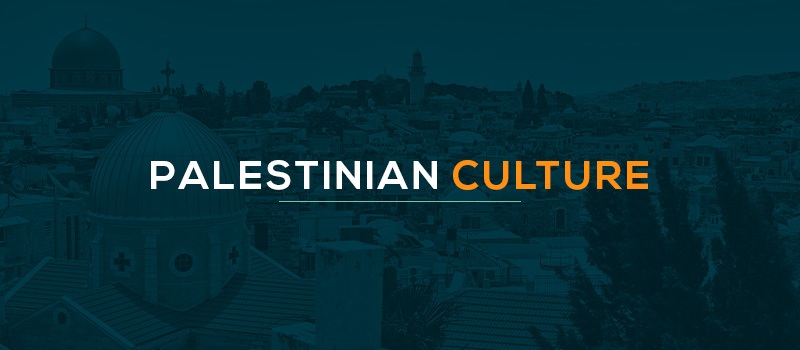

Palestinians enjoy a rich cultural heritage. The Palestinian people have lived through enormous upheaval over the course of the last century. Many Palestinians have been dispersed and displaced from their family homes, villages and cities, making Palestinian culture and traditions even more important for holding this community together. Whether in ancestral towns or in refugee camps or in communities of Palestinian immigrants in countries throughout the world, Palestinians enjoy a shared heritage and culture that allows them to carry a sense of home with them wherever they are.
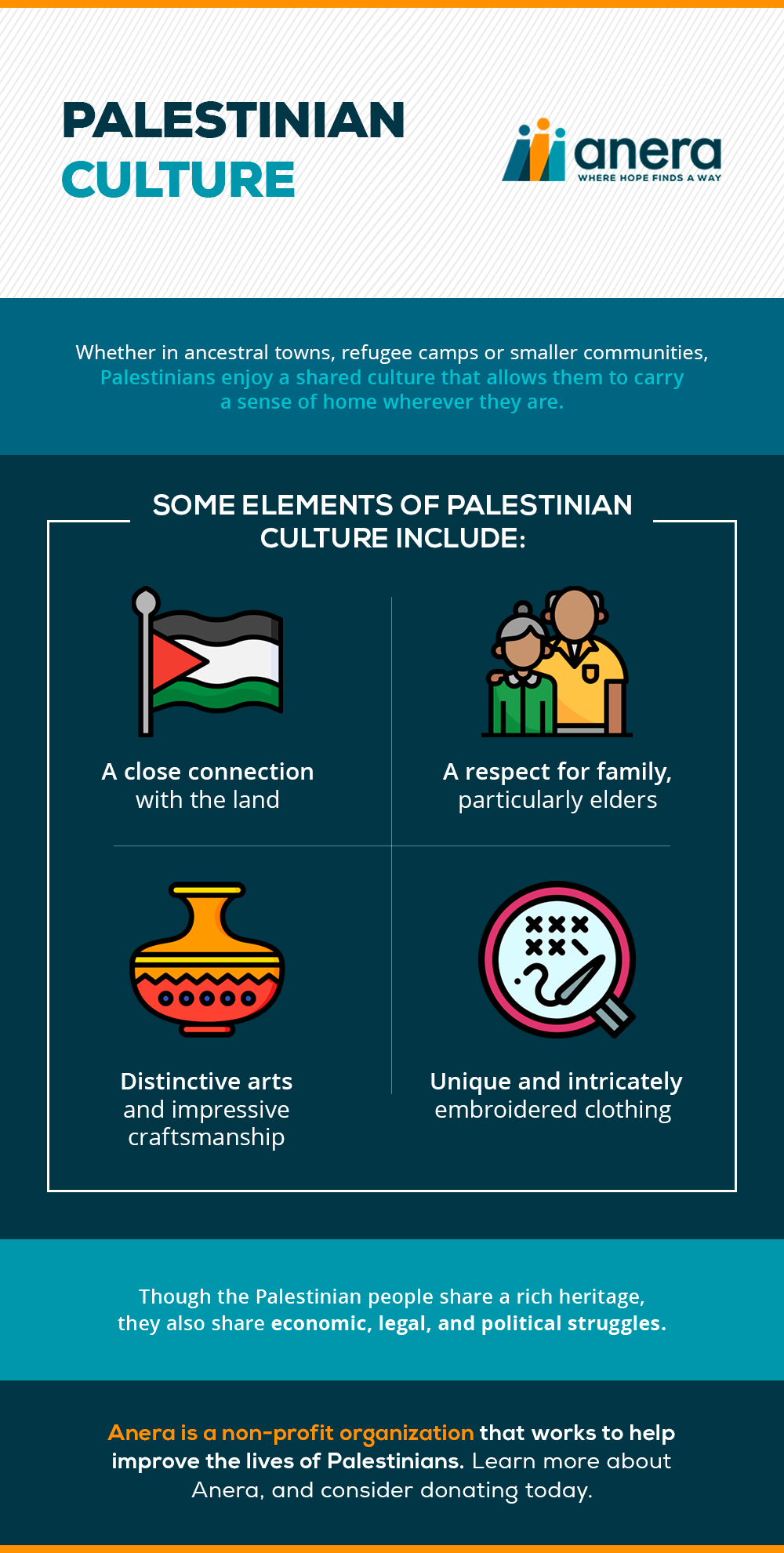

Palestinian Customs & Traditions
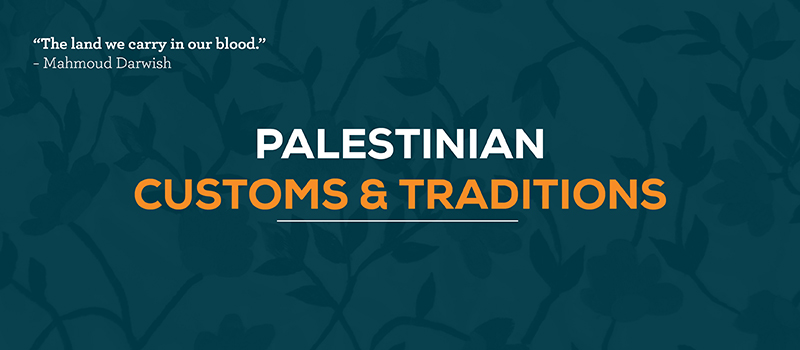

The tapestry of Palestinian cultural traditions defines and enriches Palestinians’ daily lives. Palestinian culture is far from homogeneous, with many distinct regional variations. And Palestinians living in countries outside of the Middle East often adopt some of the cultural practices common to their new homes. We list here just a few of these traditions.
Connection to the land
The Palestinians are a people with a long history and deep roots in their land and traditions. For thousands of years, Palestine has been a focal point of major historical events. Palestine belongs to the famed Fertile Crescent of human antiquity, home to some of the first agricultural communities in the world.
Historic Palestine comprises an area about the size of Vermont. Today, the majority of Palestinians in the world are refugees, and most are in the diaspora, outside of historic Palestine. Nonetheless, Palestinians have retained a strong sense of a shared common identity.
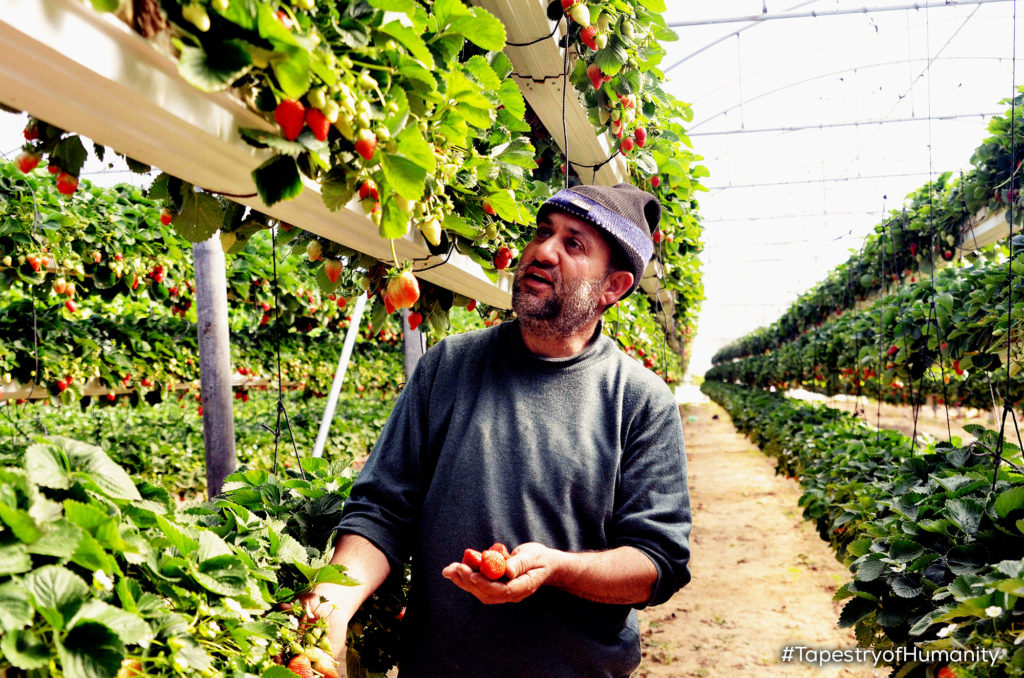

In the West Bank, East Jerusalem and Gaza, many Palestinians are refugees from villages, towns and cities that became Israel. Some of these displaced live in refugee camps, while others live in towns and cities across the Palestinian territories. Within present-day Israel, the largest Palestinian populations are in Galilee in the north, particularly the city of Nazareth, and in East Jerusalem.
Traditional Palestinian society is predominantly agricultural. Historically, most Palestinians have lived in small villages, often among extended relatives. Land is especially valued and treasured in Palestinian culture. “The land we carry in our blood,” as famed Palestinian poet Mahmoud Darwish expressed it. In contrast to some other agricultural societies, farmwork was generally undertaken communally.
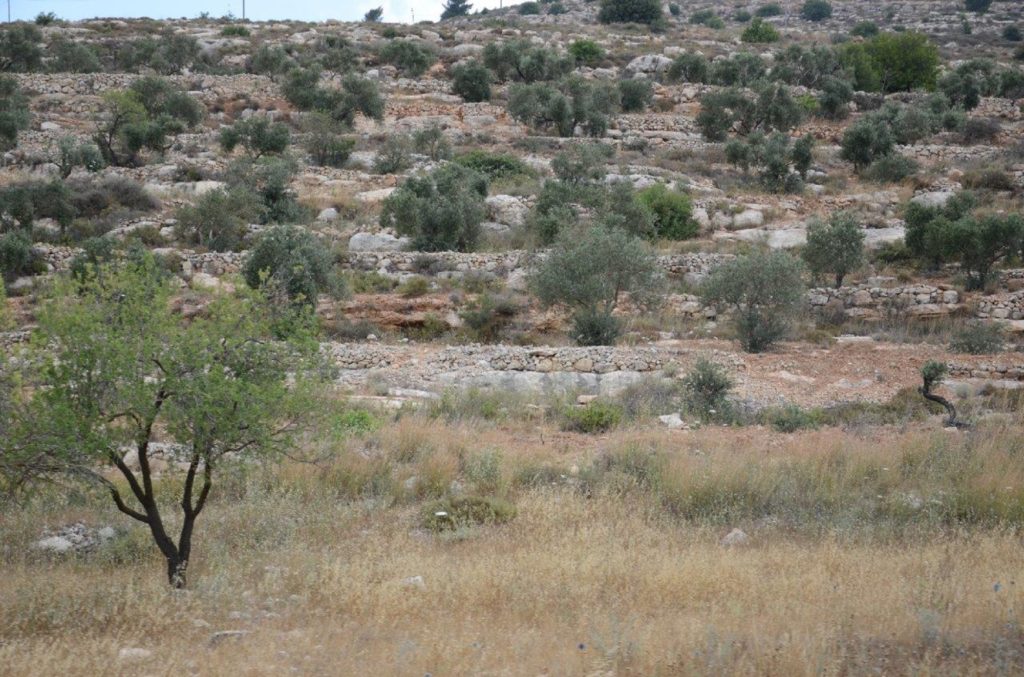

Over the course of many centuries, Palestinians have extensively terraced the rocky hills of their homeland. These stone retaining walls, known as senasil, still crisscross the hillsides of the West Bank and are recognized by UNESCO as world heritage sites. Houses too have over the years been built of stone rather than brick or timber, taking advantage of the resources most abundant in the region.
Palestine’s Mediterranean climate has made it ideal for growing crops like citrus and olives. Oranges, shipped from Jaffa, became famous and prized fruit in northern Europe in the late 19th century, before refrigeration. Further back in time, Gaza City was once well-known as an ancient trading port.
Olive trees are so closely associated with Palestine that they are almost synonymous with the region. The area was perhaps the first place where humans began to cultivate the crop.
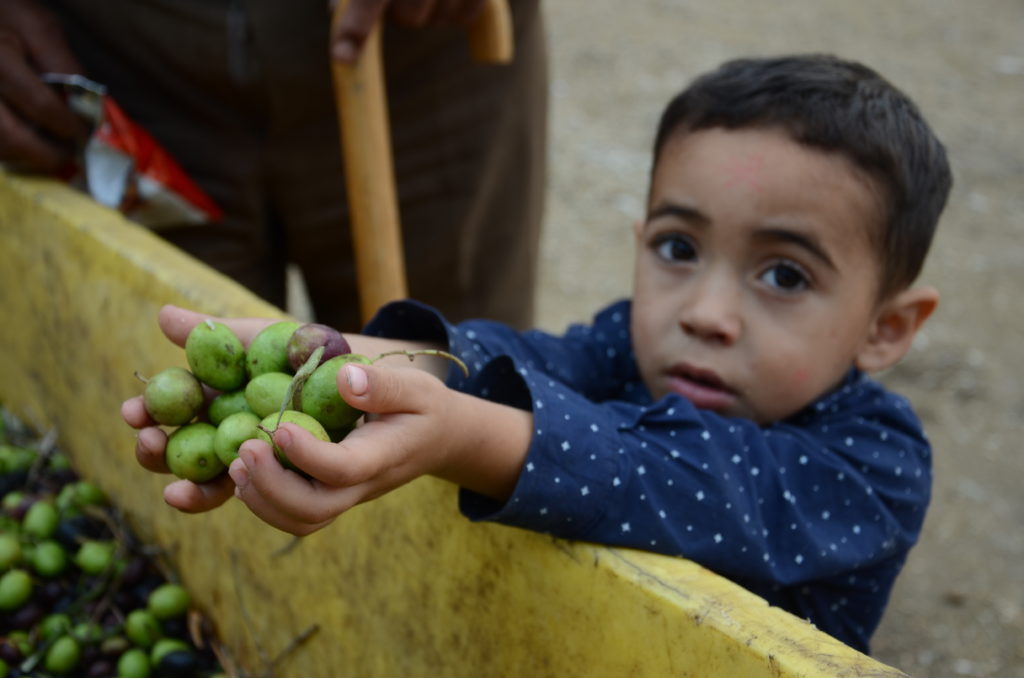

Although there is much room for further development, modern Palestinian society is highly educated with a substantial professional class. Since the latter half of the 20th century, it became more common for women to work outside of the home and family farm.
Modern Palestinian culture reflects a confluence of the many peoples in Palestine throughout history, including Arabs, Armenians, Canaanites, Europeans, Greeks, Hebrews, Romans, Samaritans, Turks, Nabateans and nomadic tribes.
The Bedouins are the traditionally nomadic peoples of Palestine. Although they lead more settled lifestyles today, many retain pastoral ways of living. There are Bedouin communities across the West Bank, many of whom lived in the Negev before being expelled during the formation of Israel. A significant Bedouin population still lives in southern Israel, and a smaller number reside in Gaza. Palestinian Bedouin tribes include the Azazme and the Ramadeen in Hebron Governorate; the Jahaleen and the Ka’abneh, in the Jerusalem Governorate; and the Rashaydeh, in the Bethlehem and Jericho governorates.
Befitting this rich history, Palestinians are diverse in appearance, with for instance, European and African features quite common. Within this diversity, Palestinians share a common cultural identity with the wider Arab world.
Modern Palestinians speak Arabic, using a Levantine dialect colloquially. Aramaic and Greek were the principal languages in Palestine until the 7th century when Arab Islamic forces arrived, leading to the widespread adoption of Arabic as the lingua franca, and of Arab culture more generally.
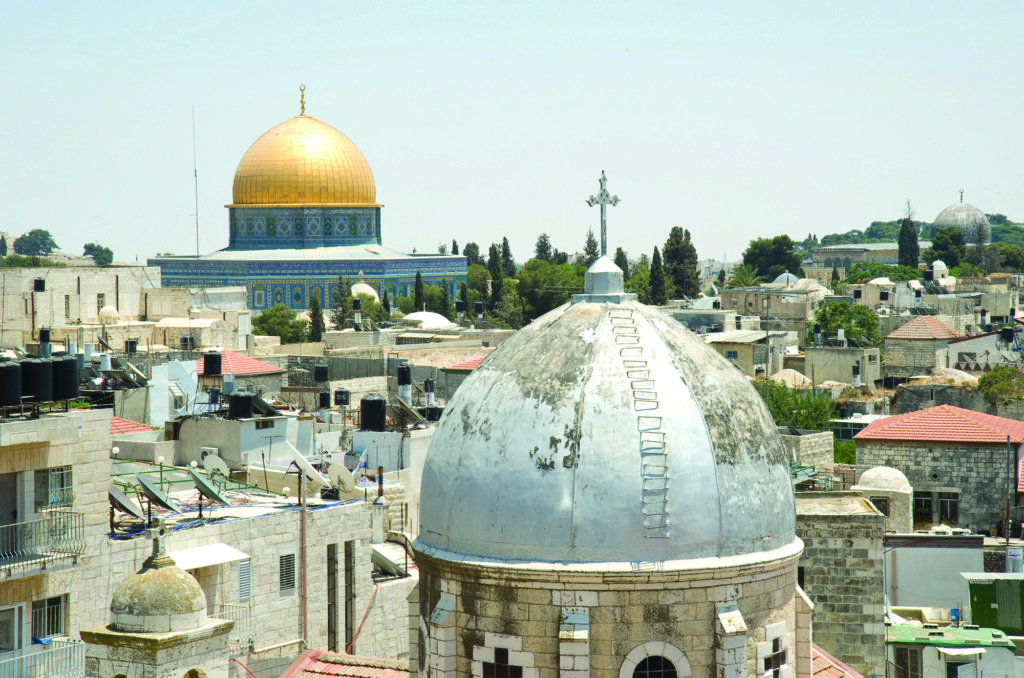

Uniquely, Palestine is a holy land in three of the world’s major religions: Christianity, Islam and Judaism. Jerusalem is home to the Al-Aqsa Mosque and the Dome of the Rock Mosque in Islam. The Ummayad Dynasty built the Dome of the Rock in Jerusalem in the 7th century CE. In Judaism, Hebron is the location of the tomb of Abraham, and Jerusalem is the site of the ancient first and second temples. In Christianity, it is the birthplace of Jesus Christ and home to the Church of the Holy Sepulchre, and, in Bethlehem, the Church of the Nativity.
Islam and Christianity are the two major religions practiced by Palestinians today. Christians in Palestine include the Eastern Orthodox (or Greek Orthodox) Church, Greek Catholic (or Melkite) Church, Roman Catholic Church and Anglican, Coptic, Ethiopian and Armenian churches.
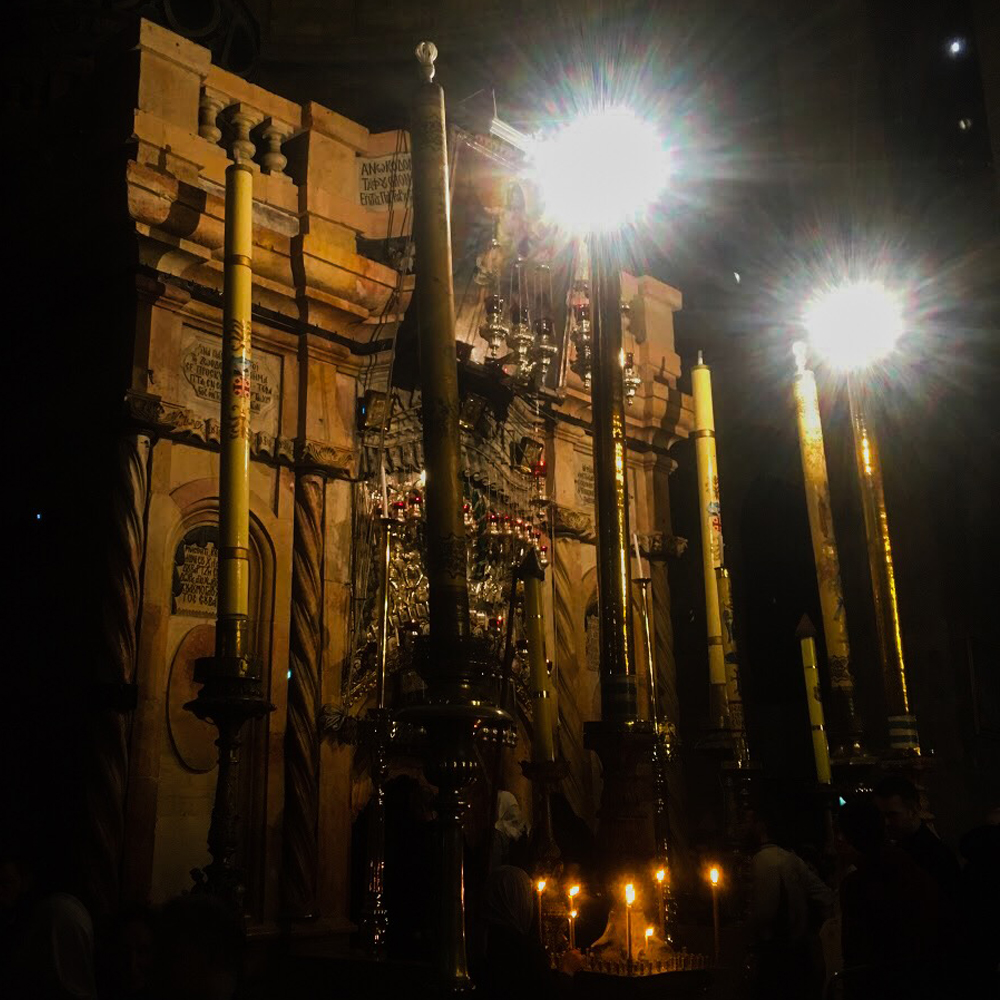

Islam is the largest religion in Palestine. In the late 19th and early 20th centuries large numbers of Palestinian Christians emigrated abroad, and many more became refugees during the formation of Israel. This resulted in a substantial drop in their percentage of the population, now in the low single digits, particularly in Gaza, although some churches remain, including the ancient Saint Porphyry. Bethlehem retains a relatively large Christian community.
In the diaspora, communities are particularly strong in neighboring Arab countries, the Gulf, Western Europe, North America (especially the U.S.) and Latin America (notably, Chile, Colombia and Honduras).
Family and tradition
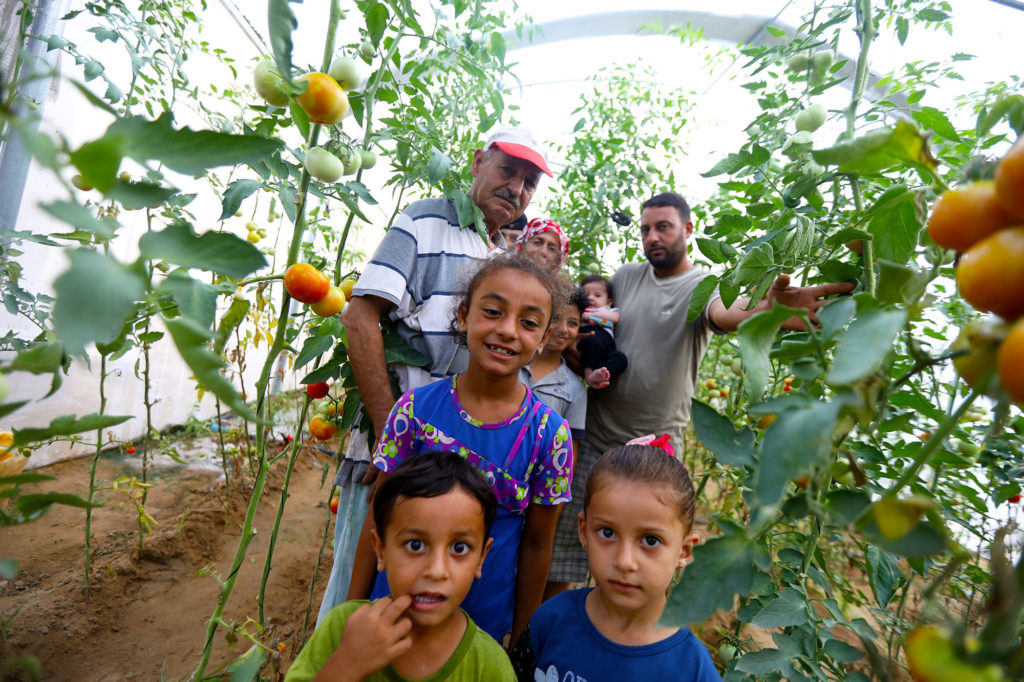

Although most Palestinians traditionally lived in villages with large extended families in close proximity, in urban areas Palestinians live in smaller family homes. However, even in cities it remains a very family-oriented culture. Extended family gatherings with meals are common — many families may participate in such get-togethers every week. Grandparents traditionally live with the family of the eldest son.
Extended family networks offer Palestinian families the social safety net that is not provided by governments. Whether helping a student with tuition, ensuring a relative is well-cared for in retirement, or supporting a family member who is unemployed, facing medical expenses, or living with disabilities, extended families are the backbone of Palestinian welfare. Often Palestinians in the diaspora send vital financial support for family members back in Palestine.
Another manifestation of the family-centered nature of society is that family members are traditionally expected to keep internal family conflicts private. The traditional culture is patriarchal in values and orientation, with the male head of the family exercising greatest authority. Among contemporary Palestinians this varies considerably with urban and more highly educated classes apt to have a more typically modern outlook, similar to others of their social class internationally. Elders of both genders are accorded great respect and authority.
Births
When a baby is born, the weeks following are full of visitors coming to see the new baby and the child’s parents. Since the parents of many young couples live nearby, the baby’s grandparents are likely to be present as well. When family, friends and neighbors stop by, the baby’s parents or grandparents will likely offer them a cup of coffee or tea and a bowl of mughli — a traditional rice powder pudding made with caraway and cinnamon and topped with fresh nuts.
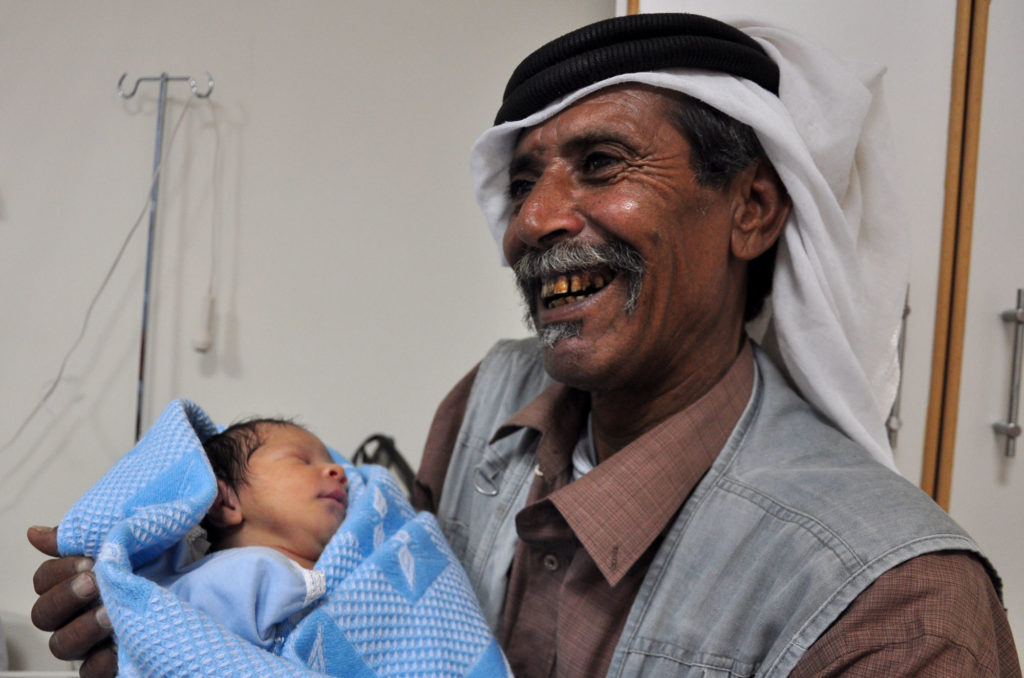

In Muslim families, the parents are likely to hold a celebratory feast for guests, usually of lamb, when a child is seven days old, similar to a baby shower but held after the birth. In Christian families, babies are usually baptized in church during their early months and family and friends are invited for a celebratory meal after this religious sacrament.
The oldest son traditionally names his own firstborn son after his father — that is, the child’s grandfather. Thus, in contrast to the tradition in the U.S., a male family given name skips a generation.
Many people refer to their friends and brothers as Abu, followed by the name of the man’s first-born son. Abu means ‘father of,’ and is often used as a nickname. Likewise, mothers are referred to as Um which means the ‘mother of,’ followed by the name of her eldest son. When the couple have no children, the wife may be referred to as Um followed by her father-in-law’s given name, and the husband is called by Abu followed by his father’s name.
Palestinians tend to raise their children with more freedom from strict daily schedules and structures in comparison to contemporary child-rearing practices in the U.S.
In more conservative communities, most Muslim girls begin to cover their hair when they reach puberty. There are also many Muslim women who choose not to wear a hijab. The practice of veiling the face in addition to the hair declined among Palestinian women through much of the 20th century, with the exception of Bedouins, although it is still practiced by some, particularly in rural areas.
Weddings and marriage
Families play a major part in arranging most marriages in Gaza and the West Bank. After identifying a good match, a family will give the couple time to get to know each other and decide whether they want to move forward with getting married. In urban areas and in the diaspora, nowadays, there are also many couples making their own decisions, with the blessing of their families.
Historically, marriage to cousins was once common. Polygamous marriages are rare among Muslim Palestinians, except among some Bedouin communities. As Palestine does not have a civil marriage option, marriage law follows the religious faith of the couple.
According to Palestinian tradition, once a couple agrees to marry, the prospective groom offers the bride a maher, a symbolic amount of money and valuables that can be compared to the practice of giving a dowry or a diamond ring in other cultures.
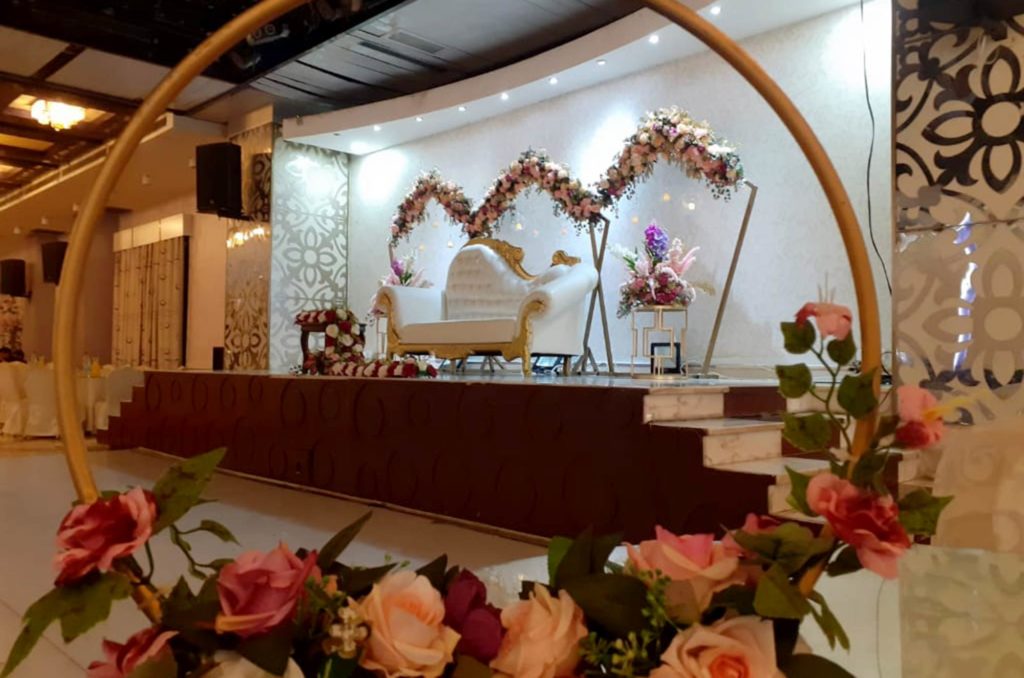

Most families hold the engagement party at their home, and celebrate with their guests with food and dancing. Weddings are grand affairs in Palestinian culture. The groom’s family traditionally hosts a wedding feast the day before the main wedding party. The female family members all pitch in to create an array of traditional dishes like roasting a whole lamb and serving it with rice.
Palestinian wedding celebrations can stretch over multiple days and include almost the whole community. The wedding celebrations usually start the night before with a henna night. The bride’s family and her friends gather for a joyous night of singing, dancing, and a henna artist is brought in to give guests the traditional temporary tattoos. Men will have their own party on that night where they sing different songs and dance dabke.
On the day of the wedding ceremony, guests carry the bride in a procession to the groom’s house to begin the celebration. Guests gather in living rooms and other available spaces. Some weddings have so many guests in attendance that they take place in public areas like the town square.
For the wedding ceremony, the bride typically wears a white gown, as in the West. Following the wedding, the couple embark on a honeymoon. Although contemporary urban couples will likely move into their own home, according to traditional village custom the couple moves into the home of the groom.
Funerals
When a death occurs, guests visit the family of the deceased to pay their respects and reflect on the deceased person’s life while drinking black coffee, served unsweetened for the occasion. It is customary for families to remain in mourning for 40 days, during which time family members wear black.
Muslims believe the body of the deceased should be buried within 24 hours and placed in the ground, facing toward Mecca. Guests pray for the soul of the deceased person during the burial. Afterward, the bereaved family usually hosts a meal and opens their home for three days for guests to visit and share their condolences.
Holidays
Palestinians begin the new year on January 1. And, like much of the world, Palestinians celebrate International Workers’ Day, also known as May Day or Labor Day, on May 1. Although not an official holiday, many Palestinians commemorate Palestinian expulsion and loss of land on Nakba Remembrance Day on May 15. Palestinian Independence Day and the International Day of Solidarity with the Palestinian People take place in November. Independence day is a public holiday in Palestine, commemorating the declaration of independence proclaimed, if not achieved, in 1988. Schools, government offices and many businesses close.
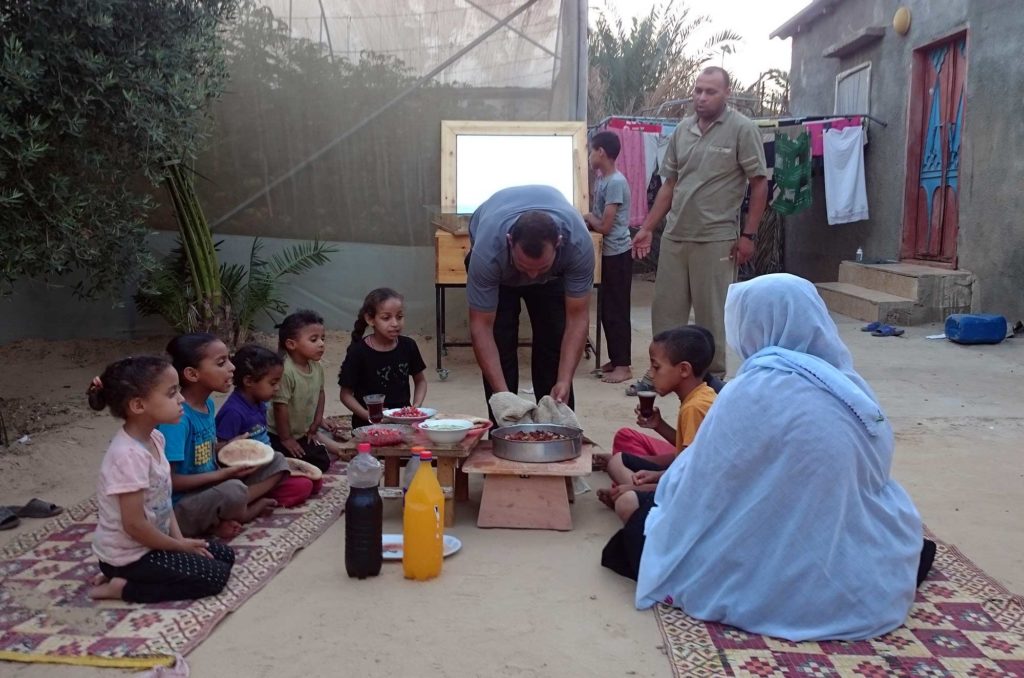

For Palestinian Muslims, each year is also marked by Islamic holidays, which follow the lunar calendar. These include the holy month of Ramadan, when believers fast during the day and offer Zakat to aid the poor, and Eid Al Fitr, marking the end of Ramadan, Eid Al Adha (the Feast of Sacrifice), the Islamic new year and the birthday of the Prophet Muhammad. Palestinian Christians observe their religious holidays, including Easter and Christmas, according to the liturgical calendar of their church (for instance, the Eastern Orthodox Church observes the Julian calendar).
Expressive Arts
Many regions of Palestine have distinctive arts and crafts for which they are well known. Olive-wood carving, for instance, is closely associated with Bethlehem, where artisans can sell to the religious tourists the area has long attracted. Nablus, meanwhile, is traditionally famous for its soap production, while Hebron is renowned for glass blowing and ceramics. And Gaza City is known for the production of pottery and rugs.
Clothing
Among both women’s and men’s traditional clothing in Palestine there was considerable variation among social classes, and with distinct fashions between urban, rural and nomadic Bedouin populations. Traditional clothing was usually made of cotton or linen.
Traditional male clothing such as tunics and Ottoman-influenced styles gradually gave way in the early 20th century to Western-style clothing. Contemporary urban women also tend to dress in Western clothes most of the time. Sandals are the traditional footwear for Paletinian men. Shoes and other footwear are typically removed before entering the house.
Women’s clothing became more conservative in the late 1980s, after the beginning of the First Intifada, when more women started covering their hair and wearing long and loose-fitting clothing.
Traditional headwear varies. The Bedouin keffiyeh is worn on the head and held in place with a length of rope. The keffiyeh, or hattah, is a square of cloth often white with a checkered or fishnet pattern in black or red. In the early 20th century this headwear became a symbol of Palestinian nationalism and began to be adopted by non-Bedouin Palestinians. Today the iconic garment is popular among all social classes in Palestine and beyond. Internationally, supporters of the Palestinian cause sometimes wear the keffiyeh, and it has even been adopted by the global fashion industry.
Tatreez
Palestinian women have traditionally worn thobes, elaborately decorated dresses for formal wear on special occasions. These clothes often feature intricate cross-stitch embroidery, known as tatreez, that uses geometric patterning. Women passed down family embroidery patterns, and girls would stitch dresses to prepare for their marriage. They also included jewelry, other garments and accessories in preparing for married life. Each village and region developed its own unique embroidery styles, colors and patterns. Gaza’s Deir Al Balah region, for instance, is known for moon and feather stitching patterns. Even families who have lived for generations in a refugee camp have often preserved and passed down the traditional embroidery designs of their village. Some of these designs can be traced back thousands of years to antiquity — a remarkable continuity in a region subject to so much political upheaval. Women have sometimes formed cooperatives to produce embroidery collectively.
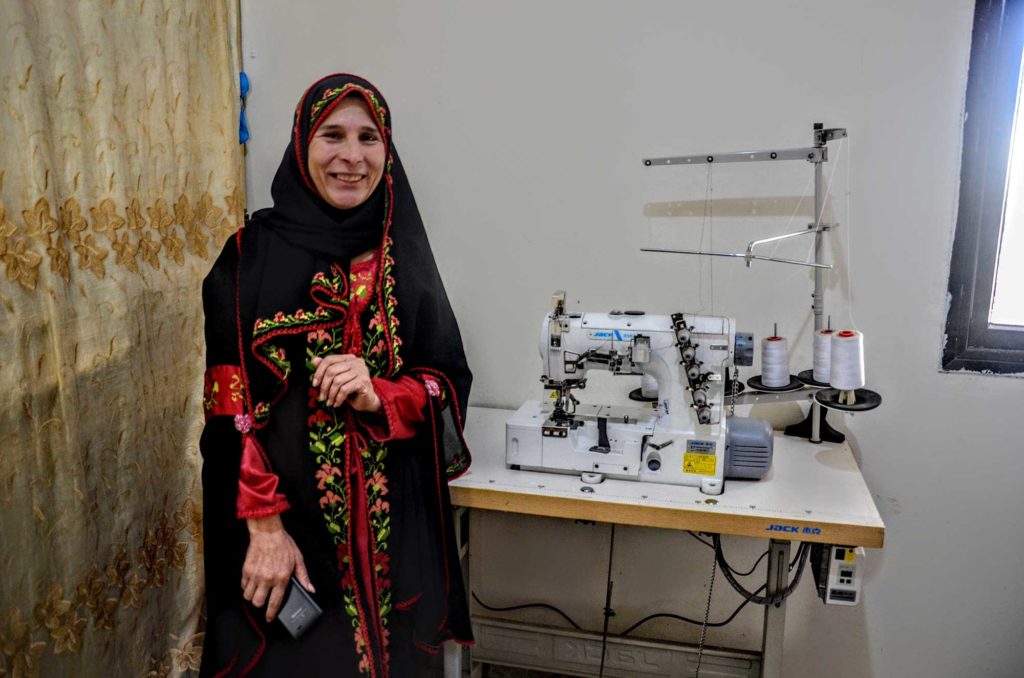

Tatreez can be used to decorate more than just clothing — pillow cases, tablecloths, handbags and many other items can be found adorned with the beautiful stitching.
Tattoos
Bedouin peoples have an ancient tradition of tattooing as a means of identifying tribes, showing status, or enhancing beauty. Often the symbols came from designs in ornate rugs. Although the practice faded in the 20th century, in part because many of the faithful consider it a forbidden practice in Islam, it is still possible to meet older women sporting the distinctive facial tattoos.
Henna
The art of henna goes back thousands of years in the Middle East, in Christian and Muslim traditions, as a symbol of good luck, health and sensuality. When Islam came to prominence beginning in the seventh century, and tattooing was no longer allowed, henna’s popularity in the Arab world grew.
It is used for celebrations like weddings, beauty and adornment, self expression, blessings and well-being, honoring ancient traditions, and more. The henna night before a wedding is an old tradition that brings together the bride and groom’s families to bond, celebrate, and take care of any last arrangements for the big day.
Henna stains are orange when the paste is first removed, but darken over the following three days to a deep reddish brown due to oxidation.
Music
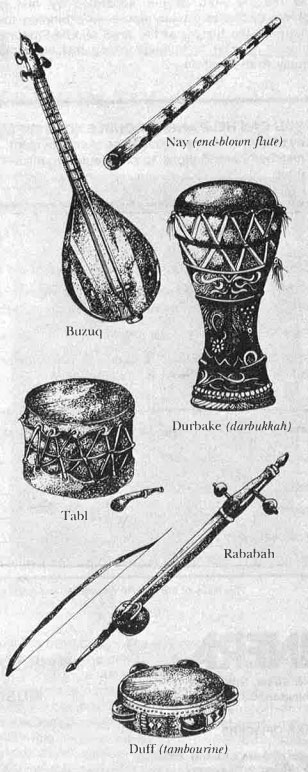

Music has long played a central role in Palestinian life, particularly during celebrations and festivals. Musical instruments like the oud and the qanun are beloved traditional instruments popular in Palestine and the wider region. In fact, the English word for the lute derives from the Arabic oud.
Palestinian music came to regional prominence in 1936 with the launch of the Here is Jerusalem radio station, only the second radio station in the Arab world, after Cairo is Here. Four years later, Jenin established its own radio station, Near East. These two Palestinian stations helped launch the careers of many Palestinian musicians, including Yahia Lababidi, Esam Hammad, Abdul Majid Abu Laban and Mohammad Ghazi.
The political events of the 20th century have led to many songs about Palestinian feelings of exile, homesickness and longing for freedom. Hadi Ya Bahr by Abu Arab is representative. The lyrics includes lines like:
هدي يا بحر هدي | keep calm ocean, our absence has become too long
طولنا في غيبتنا | give my salute, give it to the land that raised us
ودي سلامي ودي | and give my regards to the olive tree
للأرض اللي ربتنا | and to my folks that raised me
The years following the 1967 Arab-Israeli war saw the growth of nationalist music. The chorus of a song by Mustafa al-Kurd is thematically typical:
In hope we used to plan
And it is hope we now plant
In the hope that someday
Our hope
Will be reality
Some songs are commonly performed for specific occasions like the harvest season, weddings, funerals, and lamentations. Sometimes songs are introduced with a mawwal — a musical tradition in Palestine and neighboring countries in which the singer expresses sentimental feelings, often lamenting or longing for something like a place or a lover, over a slow rhythm with drawn out pronunciation.
Many songs are particular to the occasion and audience. Some of the most famous are almost genres unto themselves, such as Dal Ouna (دلعونا), Al Jafra (الجفرا) and Al Dahiyya (الدحية). There can be hundreds of lyrical variations on these songs, but they are immediately identifiable because of their rhythms and lyrical content. One of the most famous and popular songs is Zarif Al Tool (ظريف الطول). For decades, it has been a staple of social and national occasions, especially in the villages and refugee camps.
Palestinians are also leaving their mark on contemporary music, with famous singers, musicians and emcees like Mohammed Assaf, DJ Khaled and Simon Shaheen.
Literature and Scholarship
In the era before mass media, traditional storytelling was an artform in Palestine. A skilled hakawati, or storyteller, could hold audiences rapt with stories that entertained and imparted wisdom. And Palestinian verse often took the form of folk poetry, known as zajal.
In the 20th century, a number of acclaimed Palestinian writers have produced a prodigious body of literature and intellectual thought. Leading figures of the past century include Emile Habibi, Jabra Ibrahim Jabra, Ghassan Kanafani, Sahar Khalifeh, Edward Said, Samira Azzam and Raja Shehadeh, to name but a few. Kanafani was a journalist and political activist but is best remembered for novels like Men in the Sun. The late Said was an enormously influential professor of literature at Columbia University who authored the seminal book Orientalism. Shehadeh, a lawyer and rights advocate, is also a noted writer and political commentator who, in Palestinian Walks, conveys Palestinian landscapes with a richly detailed sense of place.
Palestinians have a particularly strong poetry tradition. From Fadwa Tuqan and Samih al-Qasim, to their most internationally famed poet of all, Mahmoud Darwish, to diaspora poets like Tamim Al-Barghouti and Palestinian-American Naomi Shihab Nye, Palestinian culture has produced a remarkable number of admired poets. Themes in their work express concerns central to the Palestinian experience such as the loss of land and attachment to the land, confrontations with injustice, resistance and steadfastness, and the quest for freedom. For Palestinians in the diaspora, themes of exile, return, and identity also figure prominently. At the same time, it is important to note that Palestinian poets also write about universal themes including romantic love, family relationships, life and death, and natural phenomena. The loss of Palestine in 1948 also influenced Arab poetry as a whole, with poets across the Arab world questioning war and injustice and expressing anger toward Arab leaders.
Like other Arabic-language poets, Palestinian poets started experimenting with form in the middle of the 20th century and exploring free verse and less structured meter and style. They have produced a diverse and dynamic corpus of poetry that continues to grow and evolve. Many Palestinians are also influenced by American hip-hop artists. Bands like DAM explore themes that include politics, injustice, and gender relations. There are a number of Palestinian American poets today who are garnering widespread attention. Many Palestinian poets who write in Arabic, like Najwan Darwish, are being translated to English and other languages. Spoken word poetry, often combined with activism, is popular, and notable examples are Rafeef Ziadah’s powerful performances.
Visual Arts
Visual arts in Palestine has roots in folk traditions as well as religious imagery from Christian and Islamic traditions. The art scene today reflects the dynamics in contemporary Palestinian society. Artists are spokespeople for their country’s and culture’s interest and preservation. They fulfill a social and sometimes activist role.
Leading artists of the last century in visual mediums include Nabil Anani, Kamal Boullata, Fathi Ghaben, Sliman Mansour, Ismail Shammout and the cartoonist Naji al-Ali, creator of the iconic Handala character.
For much of the 20th century, Palestinian art largely concerned itself with Palestinian nationalism and related themes like exile, the plight of refugees, and resistance. Artists often used common symbols and slogans to convey political messages. The Oslo Accords of the mid-1990s ushered in a new wave in Palestinian art, marked by more diverse and personal themes, the opening of new artistic venues and the emergence of an international market for Palestinian art. Outside of the galleries, the work of Palestinian artists who have embraced graffiti art and murals is a frequent site in many Palestinian cities.
Film
In recent decades, Palestinian film has taken off, with a number of directors and actors making waves with internationally acclaimed pictures, such as Amreeka, Lemon Tree, Speed Sisters, Stitching Palestine, Miral, 3000 Nights, Ave Maria, Omar, The Wanted 18, Wajib, Villa Touma and When I Saw You. Directors like Annemarie Jacir and Cherien Dabis, and leading Palestinian actors like Hiam Abbass and the Bakri family have helped to establish a reputation for Palestinian cinema.
Palestine also produces some local television shows. Palestinian dramas must compete with other shows popular across the region, especially during Ramadan. Palestinian television shows like Kafr al-Lawz, Bas ya Zalameh and Watan Ala Watar provide satirical takes on the tribulations of daily life in Palestine, offering comedic commentary on everything from social problems to electricity cuts.
Dance
Traditional dance is a staple of celebratory events in Palestine and anywhere where Palestinians reside. Some refugee camps have dance groups where youth practice dabke — the traditional Palestinian folk dance that is also popular in Syria, Lebanon and Jordan.
Dance adds a large dose of fun to any gathering. Guests are sure to break out into this line dance at joyous occasions like weddings and other parties, and some dancers even form troupes and compete against other dancing troupes. The dabke dance form includes synchronized stomps and movements along with opportunities for improvising.
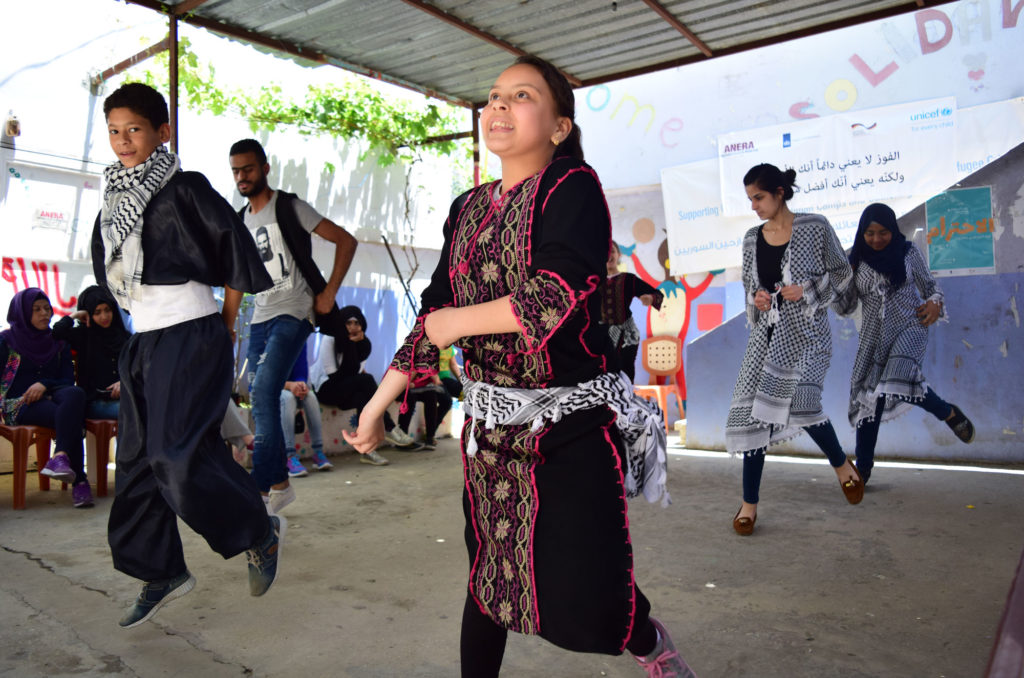

There are dozens of variations of dabke in the Levant, including al sahja (السحجة), a popular Palestinian and Jordanian dance which belongs mostly to northern and central Palestine, and, in southern Palestine, al samir (السامر) and al dahiyya (الدحية). These dances are often held on the night before a wedding party, with most of the men participating. Al samir involves two rows of men on opposite walls, competing with folk poetry, sometimes improvised, and even exchanging insults, competing in the cleverness of their retorts. Al dahiyya is a Bedouin spin on the genre, in which a woman dances between the two opposing rows of men, who compete for her attention.
Hospitality
As is generally true across Arab societies, Palestinians highly value generosity and hospitality. Gift giving is a firm custom and a manifestation of how Palestinians maintain strong social bonds.
Acquaintances might be urged to visit, and welcomed into joining family meals. In the past, during the winter, when there was less farm work to be done, families would often visit with each other and entertain themselves by telling epic folk tales. As noted above storytelling was a regular form of traditional entertainment.
Palestinian Food
Sahtein! This is a common expression at meals, wishing two healths upon dining mates. Rather than sad, desk lunches — meals are a social experience, to be enjoyed together.
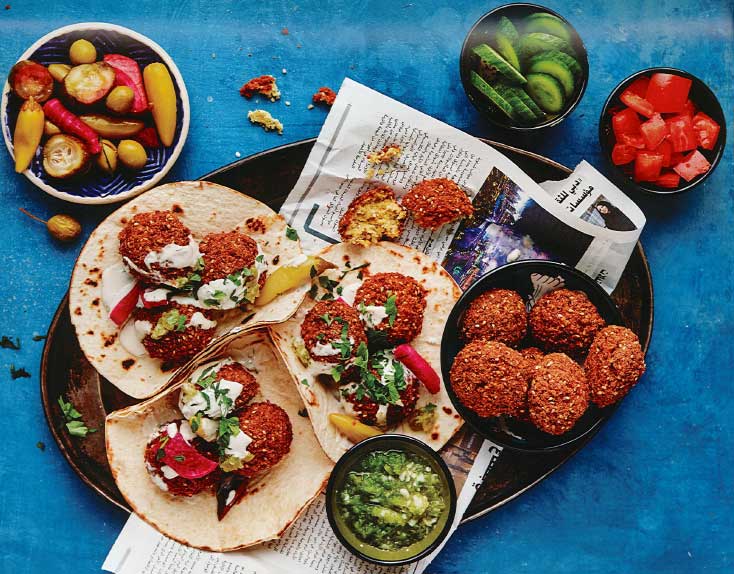

Palestinian cuisine shares many features with other Levantine food and the wider Mediterranean area. There are many regional variations and specialties as well. Gazans, for instance, are known for their love of spicy foods. In recent years, Palestinian food has become increasingly well known internationally, thanks in part to the publication of a number of cookbooks by Palestinians.
Bread, rice and bulgur wheat are the staple grains, often paired with legumes and nuts. Traditionally, one of the women of the family would make bread at home for the day or the week. Now most bread is purchased at bakeries. Flat pita bread is most common. Jerusalem is famous for its oblong rings of ka’ak al quds.
Zaatar manakish is a Mediterranean flatbread topped with olive oil and zaatar spread.
Lentils are one of the most common legumes. Lamb, beef, and fish are common where available. Even among Christians, pork is very rarely eaten.
Many vegetable and meat dishes are served with rice, such as maqluba, which takes its name from the way it is served — turned upside down onto the serving platter. Then there are the stuffed dishes — stuffed peppers, stuffed zucchini, and so on — a category collectively called mahshi (which means, you guessed it, ‘stuffed’).
Spreads of appetizers, called mazza, are a focal point of social gatherings and are often served distinct from meals. Shwarmas and falafel are popular as fast food.
Fresh fruits like apricots, figs, date and oranges are commonly served at the end of meals.
Olive oil is the staple fat used for cooking and dipping bread, serving many of the functions that butter is used for in northern Europe and the U.S. Zaatar is a much-loved seasoning blend composed principally of the wild thyme from which it derives its name and to which sesame seeds and sumac are added.
A typical breakfast features bread, cheese, a thickened yogurt called labneh, eggs, olives, and sliced tomatoes and cucumbers. And of course olive oil.
For dessert, you can’t do better than knafeh, a Palestinian delicacy of sweet cheese and shredded phyllo dough drizzled in sweet syrup and sprinkled with pistachio pieces. Nablus is famous for its cheese, made from goat’s or sheep’s milk, which also serves as the basis for its famous knafeh.
Coffee, whether prepared Arabic-style or in other ways familiar globally, is widely consumed. Sometimes people add cardamom. Tea is also a daily beverage for many, often infused with fresh mint leaves or wild sage leaves.
Some Christian and secular Palestinians consume locally produced alcoholic beverages, like arak, wine, and beer.
Traditional cuisine is a major part of Palestinian culture. Both the cooking and eating of delicious, signature dishes bring people together and connect Palestinians to their heritage. The women of the house traditionally prepared the food, although again, you will find variation in modern families. Variations of many of these dishes can also be found in the food cultures of other countries in the region:
- Hummus: The world famous dip is made from mashed chickpeas and tahini, with lemon juice, olive oil and garlic or other seasonings.
- Falafel: A popular street food. Balls of ground fava beans or chickpeas and herbs are deep fried and placed into a pita or flatbread.
- Waraq dawali: Palestinians stuff vine leaves with rice and minced meat to make this savory treat.
- Maqluba: Maqluba translates as ‘upside down.’ Meat, rice and vegetables are layered in a pot. Once cooked, the pot is flipped over on a plate, and the pot is lifted off. The dish ends up looking similar to a cake. Many consider maqluba the national dish of Palestine.
- Maftool: A Palestinian couscous made of wheat. The name means ‘hand rolled.’ It is traditionally served with a stew spooned on top with chicken or lamb.
- Hashweh: This Palestinian comfort food is stuffing made from rice, ground beef and fragrant spices.
- Makdous: A traditional breakfast food, eggplants are stuffed with roasted red peppers, nuts and seasonings and are then cured in olive oil.
- Fasoulia bil bandoura: This dish, which translates as ‘green beans in tomato sauce,’ is a simple and tasty meal with rice.
- Sambusek: These crescent-shaped pastries contain savory fillings like zaatar or meat and cheese.
- Mujaddara: This vegetarian dish is made from lentils, rice and onions. It is traditionally served with a fresh salad.
- Qidreh: A spiced rice, chickpea and meat dish that usually contains lamb, but chicken is also common.
- Ka’ek bi ajwa: These Palestinian date cookies contain date paste along with anise seeds, black sesame seeds and cinnamon.
- Knafeh: A crunchy pastry filled with spiced cream cheese, often infused with orange. The whole dessert is soaked in a sugar syrup.
Consider making some of these Palestinian recipes at home to try a taste of Palestinian cooking. Many Palestinian meals are served with salad and a cool yogurt sauce, which helps to balance the strong spices.
Learn More About Palestine and the Work Anera Is Doing
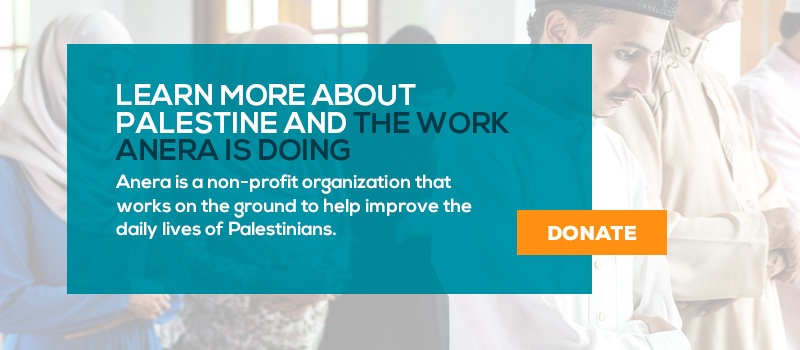

The Palestinian people share a rich heritage and many unique traditions, but unfortunately, many of them also share economic struggles due to their status as refugees. Anera is a non-profit organization that works on the ground to help improve the daily lives of Palestinians. Learn more about the work Anera is doing in places like Gaza, West Bank, Lebanon and Jordan, and consider donating to make a positive difference for these people.
This page is drawn from many sources, particularly Samih K. Farousn, Culture and Customs of the Palestinians, Greenwood Press, 2004.
Readers interested in learning more about Palestinian folktales may consult Sharif Kanaana and Ibrahim Muhawi, Speak Bird, Speak Again: Palestinian Arab Folktales.
Several books have appeared in recent decades on the Palestinian visual arts, including Kamal Boullata’s Palestinian Art: From 1850 to the Present, Saqi Books, 2009; Bashir Makhoul and Gordon Hon, The Origins of Palestinian Art, Liverpool University Press, 2014; and Gannit Ankori, Palestinian Art, Reaktion Books, 2006.
